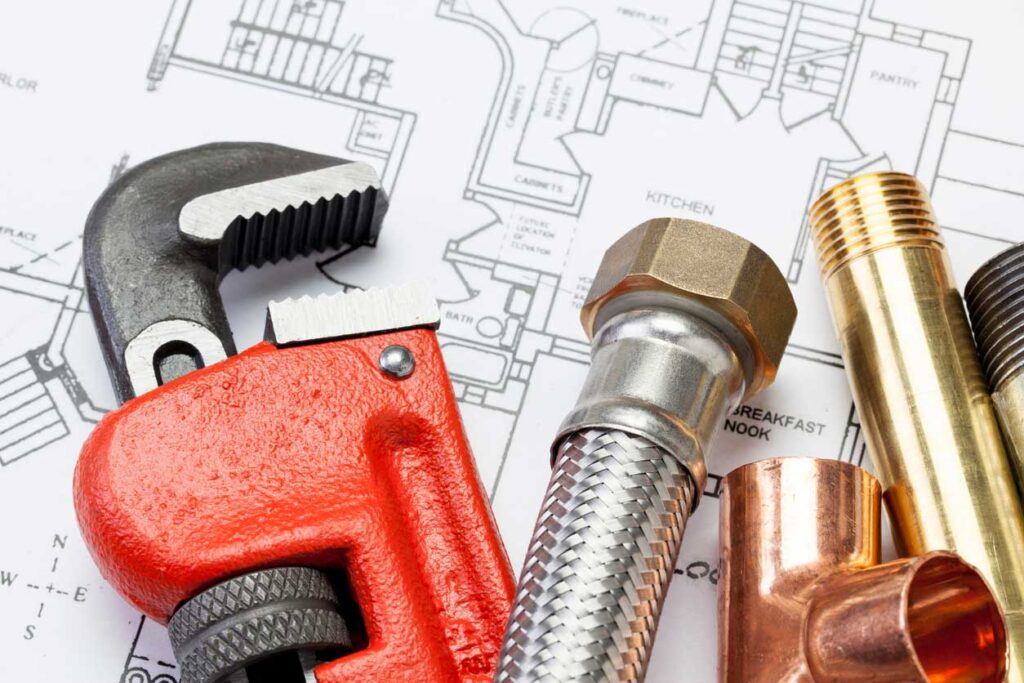Plumbing Medic’s Plumbing Dictionary
Let us know if this has happened to know you. You’re listening to your mortgage broker talk to you about the equity in your home when, in mid-sentence, your eyes glaze over and you begin to hear, “Money, money, money, mortgage, interest rates, money, money.” Then something similar happened to you when you were listening to your doctor prattle on about your latest test results only his words blurred into a gentle drone of indecipherable medical terminology.
In both of those situations, you didn’t want to come across as uninformed so you simply nodded along like a bobblehead on a bumpy road but, truly, you were very confused.
If this has happened to you, we’re sorry to say that you might have a case of TTT (Technical Terminology Tinnitus). Fortunately, with just a little reading and a lot of knowledge, you can cure any case of this completely made-up, totally fabricated medical condition that we just thought of.
When it comes to plumbing-related TTT, Plumbing Medic has your back. We’ve compiled a small list of some of the most glazy-eye, bobblehead-inducing terms in plumbing so that you never have to feel confused again. Until your next trip to the doctor’s office. Good luck with that.
A
ABS: Here’s a ten-dollar term for you; acrylonitrile butadiene styrene—ABS for short. This is a durable plastic material that we plumbers like to use in assembling pipe systems. Funny enough, it’s the same substance that LEGO blocks are made out of. But we wouldn’t recommend DIY-ing your drainage system with your 5-year-old’s toys.
Access Panel: An opening—usually in the wall but sometimes in the ceiling—that allows plumbers to “access” the plumbing system for a given fixture or set of fixtures.
Activated Carbon: Not all carbon is bad! Activated carbon, or activated charcoal, is a processed form of the element carbon with increased porosity. Plumbers and chemists alike value this substance for its tremendous ability to absorb organic chemicals from drinking water, making it safer for consumption. Forget carbon-neutral. We’re very pro carbon. Activated carbon, that is.
Angle Stop: In common parlance, most people refer to angle stops as “shut-off valves”. But if you want to sound like a pro plumber, you’ll use this more technical term. Angle stops connect faucets and fixtures to their water supply pipes within the walls via a 90degree outlet. In case of emergencies, angle stops can cut off the water supply and prevent leaking and damage. We should start calling them “angel” stops.
Anti-Scald Valve: You know what they say, “If you can’t handle the heat, get… an anti-scald valve.” Alright fine, that’s not what they say. But it’s what we say. Anti-scald valves are more or less what they sound like. They are valves that prevent the water coming out of your faucets from getting too hot. There are many different types of anti-scald valves and local building codes will have a large say in what kind of anti-scald valve you end up with. Generally, these valves find themselves attached to water heaters where they mix hot and cold water so you don’t have to find out what it’s like to be a lobster in a 5-star restaurant.
B
Backpressure: You’ll be a fluid dynamics engineer after you understand this term… not actually but you’ll be able to impress one with your knowledge. Backpressure is any resistance or obstruction to the desired flow of a liquid within any confined space, such as water in a pipe. It’s not, as the name might suggest, pressure that runs against the desired flow of water. Sharp bends in pipes, debris and clogs are some of the causes of backpressure.
Backwater Valve: Clean water comes in; dirty water goes out. That’s the general idea of residential plumbing. And it works, in no small part, thanks to backwater valves. These nifty little valves control the flow of water out of your home via a flap that permits outbound water to leave and then firmly shuts the door behind it. In the words of every cartoon hero ever, “And stay out!”
Basket Strainer: Wouldn’t it be great if our sinks and pipes simply never got clogged? Well, that’s what basket strainers are for. They’re basket-shaped mesh strainers that you can fit into the drains in your sinks and tubs. They’ll allow water to flow through but catch all of the debris that would only build up and cause backpressure in your pipes. Look at you, understanding and using Plumber Pig Latin.
Bleed: If your plumber ever says that he has to “bleed” your pipes, he isn’t talking about recreating a scene from a Quentin Tarantino movie. Instead, he’s saying that he’s going to remove excess air. He could do that by simply opening a valve or he might have to use some force—that’ll really make the pipes bleed.
BTU: The British Thermal Unit is a measure of the amount of heat required to brew a proper cup of tea… Alright fine, that’s another completely farcical thing that we just made up. But it’s actually quite close to the truth. The BTU is the amount of heat required to raise the temperature of a pound of water by 1°F. So, in a sense, it is a measure of the amount of heat required to make the perfect “cuppa”.
We barely scratched the surface of plumbing terminology but already, we know, your Technical Terminology Tinnitus is starting to go away. We’ll continue to keep your glazed eyes and bobbling head symptoms at bay with more terms in the future. But for now, if you have any TTT or plumbing-related questions, feel free to give the Plumbing Medic a call or ask one of our experts. We’re always happy to help.

